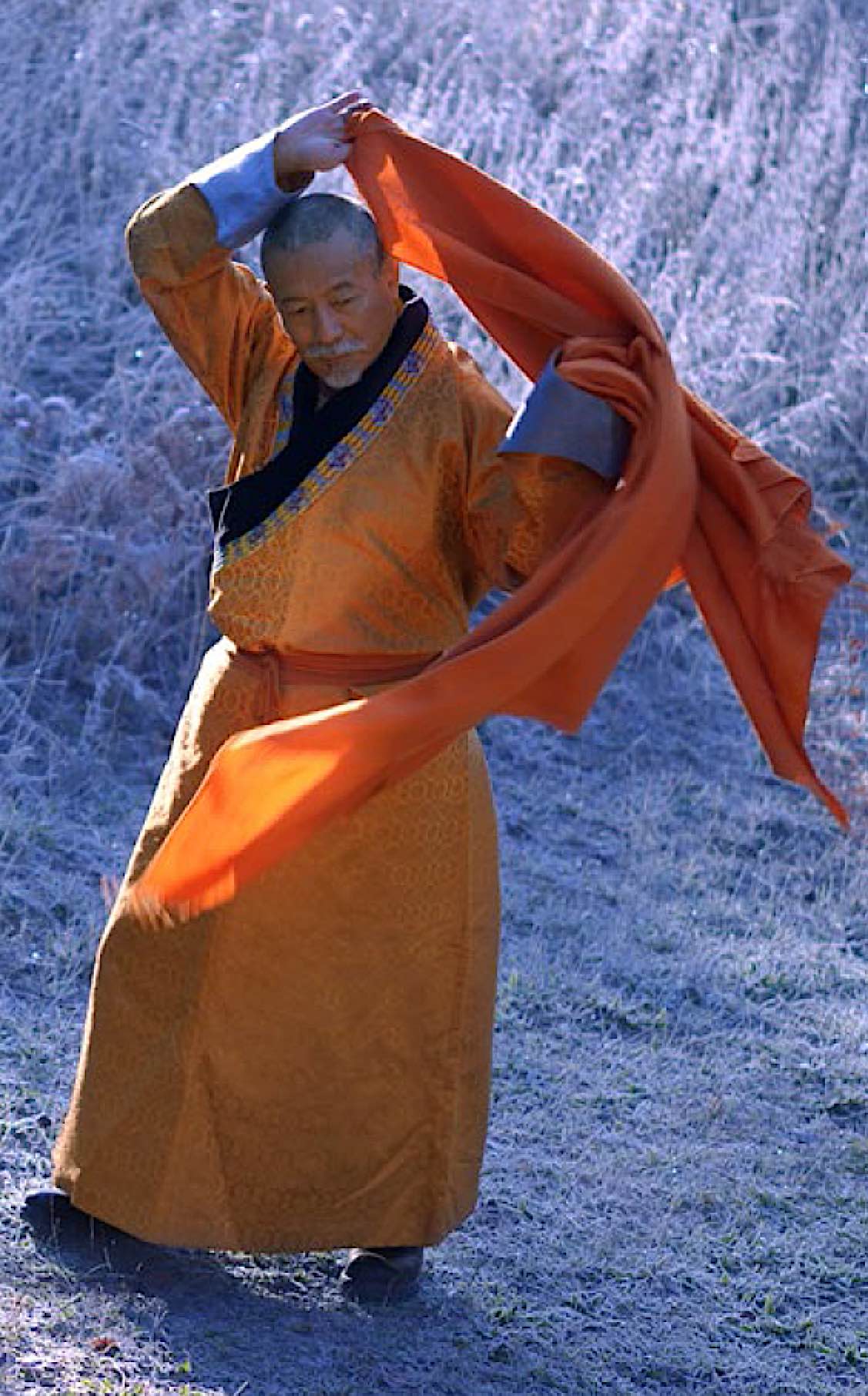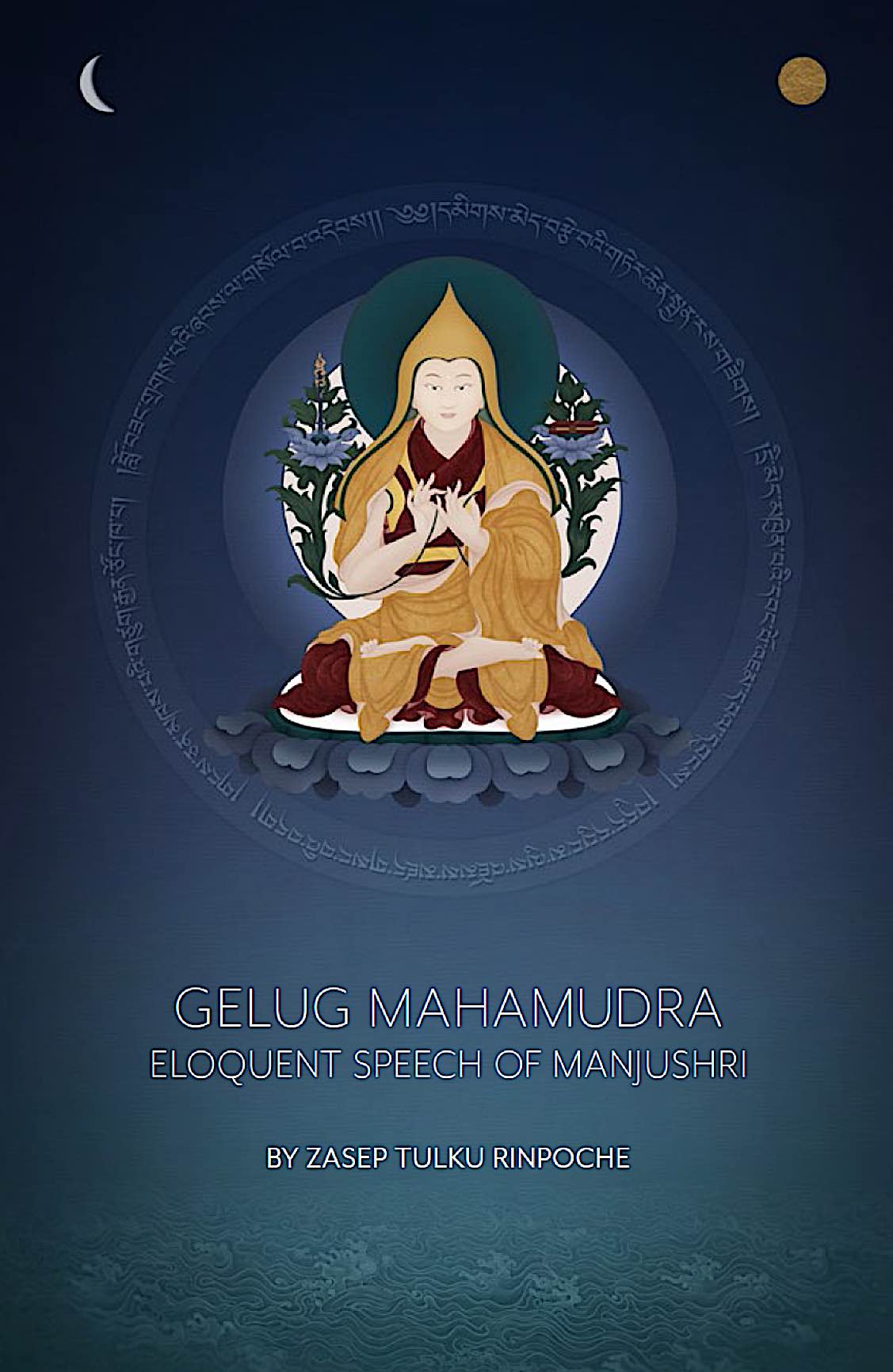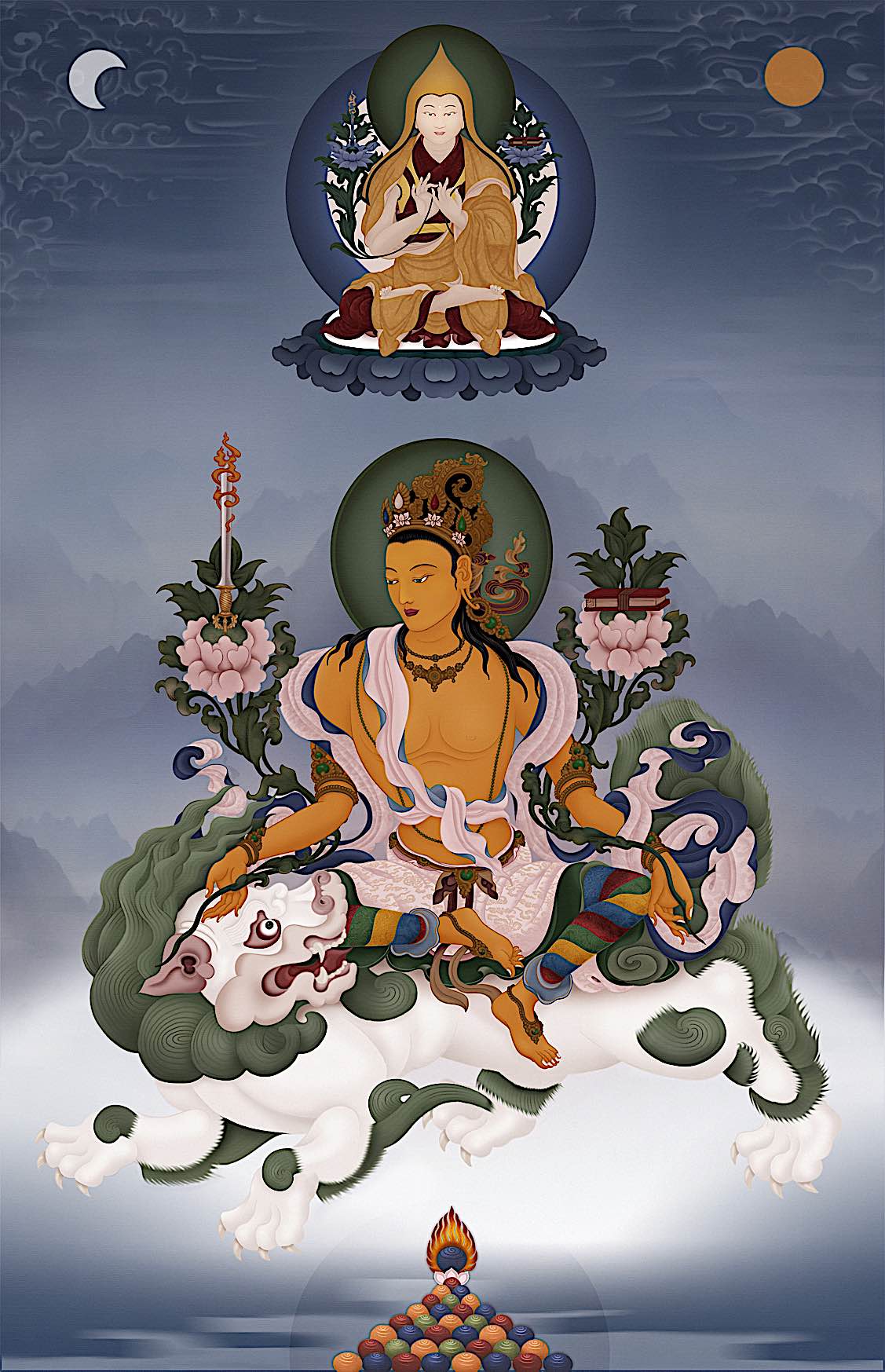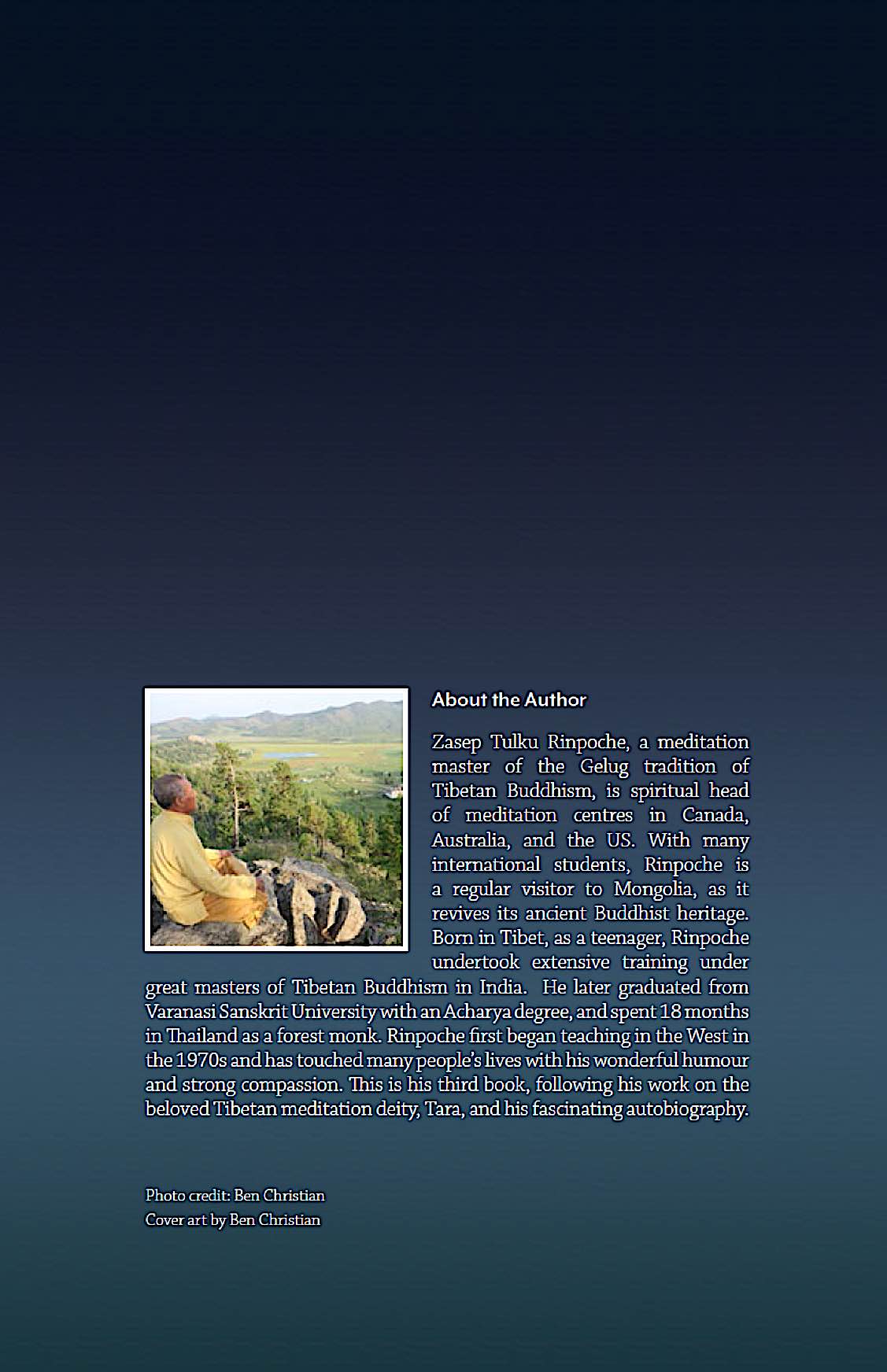Advance Book Excerpt: Gelug Mahamudra, Eloquent Speech of Manjushri, a commentary and practice guide on Sutra and Tantra Mahamudra by H.E. Zasep Tulku Rinpoche
Buddha Weekly: Buddhist Practices, Mindfulness, Meditation. Copyright Buddha Weekly.

H.E. Zasep RInpoche. Photo by Gabriela Reyes Fuchs. From the book Gelug Mahamudra, Eloquent Speech of Manjushri. Meet Rinpoche at the book launch and signing in Toronto November 24, 2018.
On November 24, Gelug Mahamudra: Eloquent Speech of Manjushri, will release with a book signing launch event in Toronto, Canada. The beautiful book, by H.E. Zasep Rinpoche, is lavishly illustrated in colour by well-known Tangkha artist Ben Christian. [1000 word excerpt from Chapter 1 below.]
The book, Gelug Mahamudra Eloquent Speech of Manjushri, is a rare commentary and practice guide in English, written for Western Buddhist students. Why is Mahamudra an advanced and special practice?
Rinpoche explains: “Mahamudra meditation is awareness and understanding of the true nature of mind; it is spacious, without beginning or end. It is like observing the sky without the trace of birds, or the criss-cross of jet planes. You can merge your consciousness in the state of Mahamudra, beyond words and thoughts. The true nature of the mind is raw or naked awareness. It is an uncovered, untamed and unaltered state, without fabrication.”
Gelug Mahamudra, Eloquent Speech of Manjushri
Buddha Weekly is honoured to have an advance copy for review (review next week). With permission of the author, H.E. Venerable Zasep Tulku Rinpoche, here is an excerpt from the introductory chapter, framing the importance of the tradition, why it is so compelling, and the lineage and source of the teaching. Also included here is the table of contents to give an idea of the scope of this important commentary on both Sutra and Tantra Mahamudra, according to the Gelug tradition.

Gelug Mahamudra, Eloquent Speech of Manjushri by H.E. Zasep Tulku Rinpoche, illustrated by Ben Christian.
Book Details
- ISBN 978 0 646 99507 6
- Author H.E. Venerable Zasep Tulku Rinpoche
- Editor Amanda Buckley
- Artwork Ben Christian [For a previous feature story on Ben Christian and his amazing art, see>>]
- Design: Green Scribble
- Wind Horse Press
- 300 pages
- 12 pages of colour illustrations and photos
Event Notes
- Author H.E. Zasep Rinpoche will attend the book launch and signing November 24 in Toronto, Canada, details here>>
- People in the Toronto area can also attend a weekend practical teaching and workshop on the methods described in the book, December 1-2, at Gaden Choling Centre in Toronto>>
Excerpt from chapter 1
(Not the full chapter.)
Mahamudra meditation is awareness and understanding of the true nature of mind; it is spacious, without beginning or end. It is like observing the sky without the trace of birds, or the criss-cross of jet planes. You can merge your consciousness in the state of Mahamudra, beyond words and thoughts. The true nature of the mind is raw or naked awareness. It is an uncovered, untamed and unaltered state, without fabrication. As the great teacher Gampopa put it, “It cannot be explained intellectually, but follow the instructions of the Guru and practise according to the lineage”.
Mahamudra is a practice that leads us to experience the true nature of our own mind, unmediated. The sources of the Mahamudra teaching go all the way back to the Buddha’s Prajnaparamita, or the Heart Sutra , and also to the Samadhi Raja, or the King of Concentration Sutra. In Tibetan it is known as Teng Nye Zin Gyalpoe Do. These Sutras state that the nature of all phenomena is Mahamudra. The Heart Sutra states:
“Mind is emptiness and emptiness is also mind. There is no mind other than emptiness, no emptiness other than the mind”.
Mahamudra is the method of realising the clear light wisdom of Shunyata and accomplishing directly and vividly what we call the ‘meaning clear light’. In its Tantric aspect, the clear light nature of the mind is called ‘ultimate short AH’. It means the uncultivated mind, the unspoiled and pure mind. As the Buddha himself said:
“Mind does not exist within the mind, but the true nature of the mind is clear light”.

One of the colour illustrations from Jampay Dorje (Ben Christian) in the important book Gelug Mahamudra, Eoquent Speech of Manjushri by H.E. Zasep Rinpoche. The book has 12 pages of images.
Buddha’s disciple Subhuti (in Tibetan the name is Rabjor) told one of his disciples, Koshika, that if you wish to cultivate Prajnaparamita , the perfection of wisdom, you need to cultivate the yoga of space and ‘without-roof obscuration’. The yoga of spaciousness he refers to is Mahamudra, and the ultimate Mahamudra is the Dharmakaya.
‘Spaciousness’ is a useful term, particularly in places like Australia and Canada where we have big and spacious regions. But our minds are crowded with too much thinking, too much obsession with mobile phones and texting, and other instant communications.
 Arya Subhuti was referring to the experience of Mahamudra as ‘the yoga of no obscuration’. In Tibetan we say Lagab Medpa. This means no roof, no wall, no floor, nothing to obscure the open space. When you are out there, you see the big sky, the stars at night — unobscured spaciousness. Likewise, when you look at the true nature of the mind, Mahamudra, there is nothing to find other than the observer mind — mind without obscuration.
Arya Subhuti was referring to the experience of Mahamudra as ‘the yoga of no obscuration’. In Tibetan we say Lagab Medpa. This means no roof, no wall, no floor, nothing to obscure the open space. When you are out there, you see the big sky, the stars at night — unobscured spaciousness. Likewise, when you look at the true nature of the mind, Mahamudra, there is nothing to find other than the observer mind — mind without obscuration.
Both Sutra Mahamudra and Tantric Mahamudra were taught by the Buddha. Great teachers like Nagarjuna, Chandrakirti, Buddhapalita, and others, propagated Sutra Mahamudra. Great Mahasiddhas Saraha, Tilopa, Naropa, and Maitripa propagated Tantric Mahamudra. These are among the most prominent of Mahasiddhas. Saraha wrote the songs of Mahamudra called the Doha; they are now translated into English.
One of the most important Gelug texts on Mahamudra is called, The Main Path of the Victors: A Root Text for the Precious Gelug-Kagyu Tradition of Mahamudra, by the First Panchen Lama, Losang Chokyi Gyaltsen (1570 to 1662)…
… The Gelug lineage Sutra and Tantra Mahamudra method is unique; it originated and descended from Manjushri directly to Lama Je Tsongkhapa…
… The Mahamudra traditions of both Gelug and Kagyu are very precious. I have great admiration and warm feelings towards the Kagyu Mahamudra lineage, since several of my previous incarnations were Kagyu masters. However, we have our own traditions in the Gelug teaching methods. I must say that the actual Gelug technique of Mahamudra is deeply profound, and in particular, the Tantric Mahamudra is supreme…
… In our tradition, we believe it is a great experience of Mahamudra to watch your mind react to everyday stresses, especially when you run into the objects of desire or aversion. True practitioners are not afraid to take this direct awareness of mind into the outer world.
I would like to end this introduction with a note about Tantric Mahamudra. The First Panchen Lama states that in order to practise Tantric Mahamudra one must first receive one of the highest Tantric empowerments, such as the four empowerments (vase empowerment, secret empowerment, wisdom empowerment, name empowerment) of Yamantaka, Heruka or Guhyasamaja from a qualified Guru. The student must then honour and keep properly the vows of Guru Yoga: the Bodhisattva vows, Tantric vows and commitments.
You need to become familiar with the practice of the generation stage, bringing the three kayas into the path of enlightenment. You also need to become familiar with the profound path of the completion stage practice. This includes knowledge of prana meditation practice, stage by stage: bringing prana into our channels and Chakras through the central channel, with the prana entering, remaining and dissolving there; cultivating mystic Tummo yoga, the clear light and bliss realisation of Tantric Mahamudra.
Tantric Mahamudra is a very advanced practice. Therefore in order to do the completion stage practices, such as vase breathing, mystic Tummo yoga practice and so forth, you must consult with a qualified Vajra Master or Guru, and you need the Guru’s permission to do the practice. It would be risky for anyone to try to practise completion stage yoga, such as Tummo mystic fire or Agni yoga, without proper preliminaries and without qualifications.
Please ensure you get advice and instructions from the proper master on how to practise step-by-step; when the Guru gives you permission to do these practices then your practice can go smoothly, without obstacles.
CONTENTS of book
PRELIMINARIES
CHAPTER 1 Introduction to Mahamudra
CHAPTER 2 Praises and Supplication to the Lineage Gurus of Gelug Mahamudra
CHAPTER 3 Brief Stories of Prominent Lineage Gurus
CHAPTER 4 Taking Refuge and Generating Bodhicitta
CHAPTER 5 Mandala Offerings
CHAPTER 6 Vajrasattva Practice
CHAPTER 7 Guru Yoga
THE ACTUAL PRACTICE OF MAHAMUDRA
CHAPTER 8 Seven Limb Practice
CHAPTER 9 Sutra Mahamudra – Actual Samatha Mahamudra
CHAPTER 10 Vipassana – Superior Insight (Lhag Tong in Tibetan)
CHAPTER 11 Emptiness of Personality and Phenomena
CHAPTER 12 Mahamudra by Four Great Gelug Masters
CHAPTER 13 Tantric Empowerment
CHAPTER 14 Tantric Mahamudra
DEDICATION
INDEX
The post Advance Book Excerpt: Gelug Mahamudra, Eloquent Speech of Manjushri, a commentary and practice guide on Sutra and Tantra Mahamudra by H.E. Zasep Tulku Rinpoche appeared first on Buddha Weekly: Buddhist Practices, Mindfulness, Meditation.
from Buddha Weekly: Buddhist Practices, Mindfulness, Meditation https://ift.tt/2SwnEVd

Post a Comment